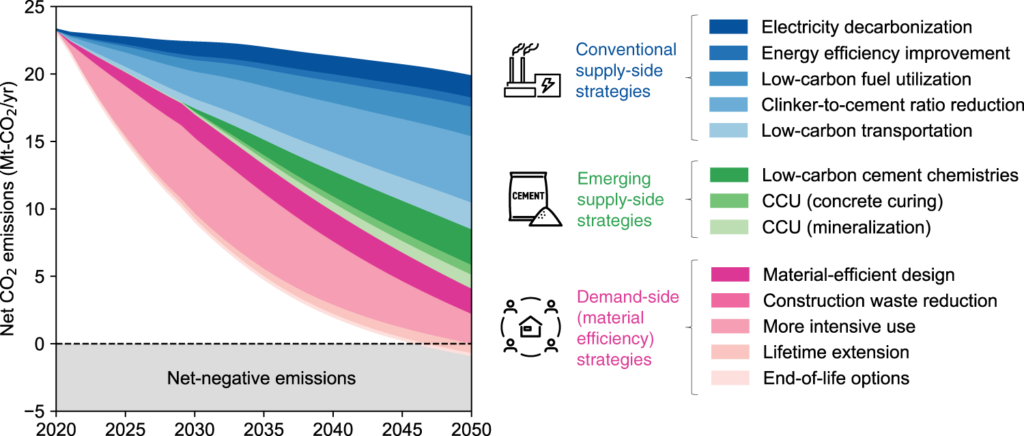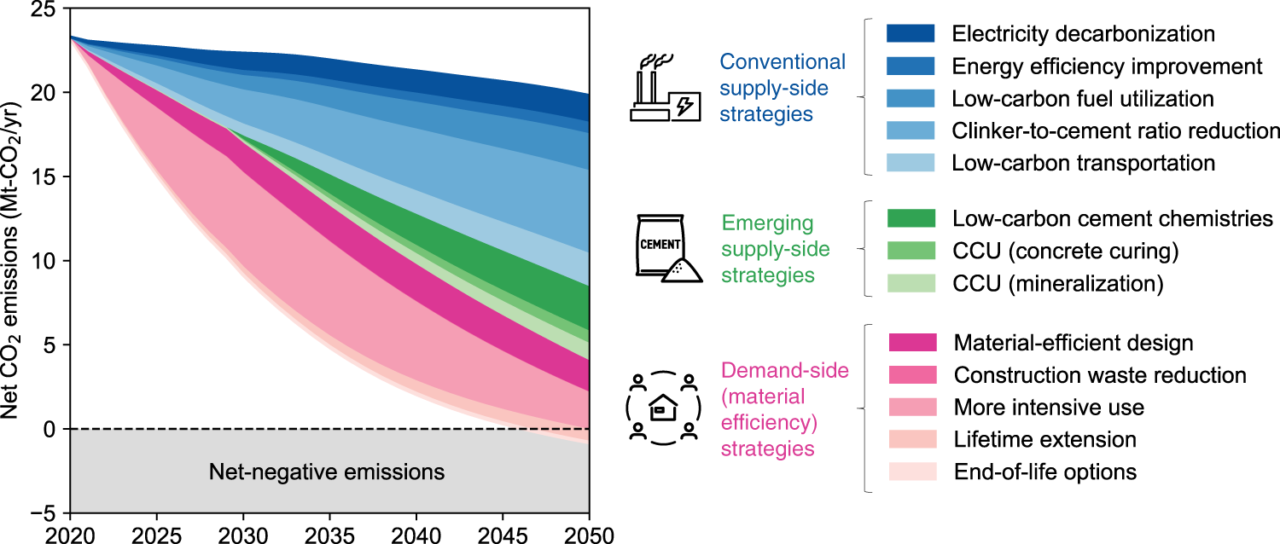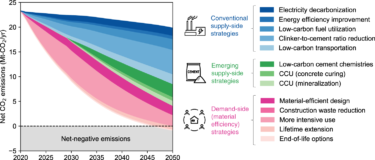
Abstract
Decarbonization strategies for the cement and concrete sector have relied heavily on supply-side technologies, including carbon capture and storage (CCS), masking opportunities for demand-side intervention. Here we show that cross-cutting strategies involving both the supply and demand sides can achieve net-zero emissions by 2050 across the entire Japanese cement and concrete cycle without resorting to mass deployment of CCS. Our analysis shows that a series of mitigation efforts on the supply side can reduce 2050 CO2 emissions by up to 80% from baseline levels and that the remaining 20% mitigation gap can be fully bridged by the efficient use of cement and concrete in the built environment. However, this decarbonization pathway is dependent on how CO2 uptake by carbonation and carbon capture and utilization is accounted for in the inventory. Our analysis underscores the importance of including demand-side interventions at the heart of decarbonization strategies and highlights the urgent need to discuss how to account for CO2 uptake in national inventories under the Paris Agreement.
Authors
Takuma Watari, Zhi Cao, Sho Hata, and Keisuke Nansai
Journal
Nature Communications, 2022, 13, 4158, Link


